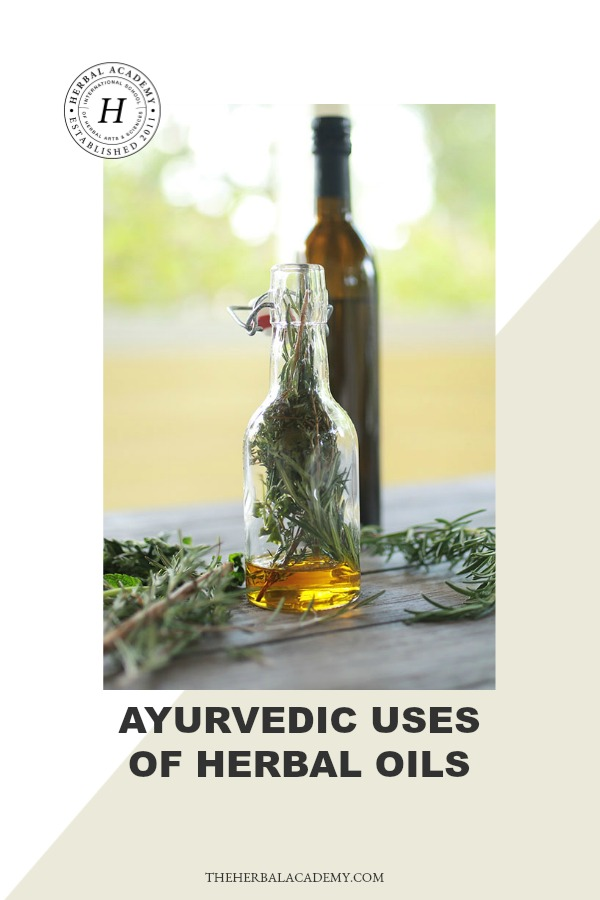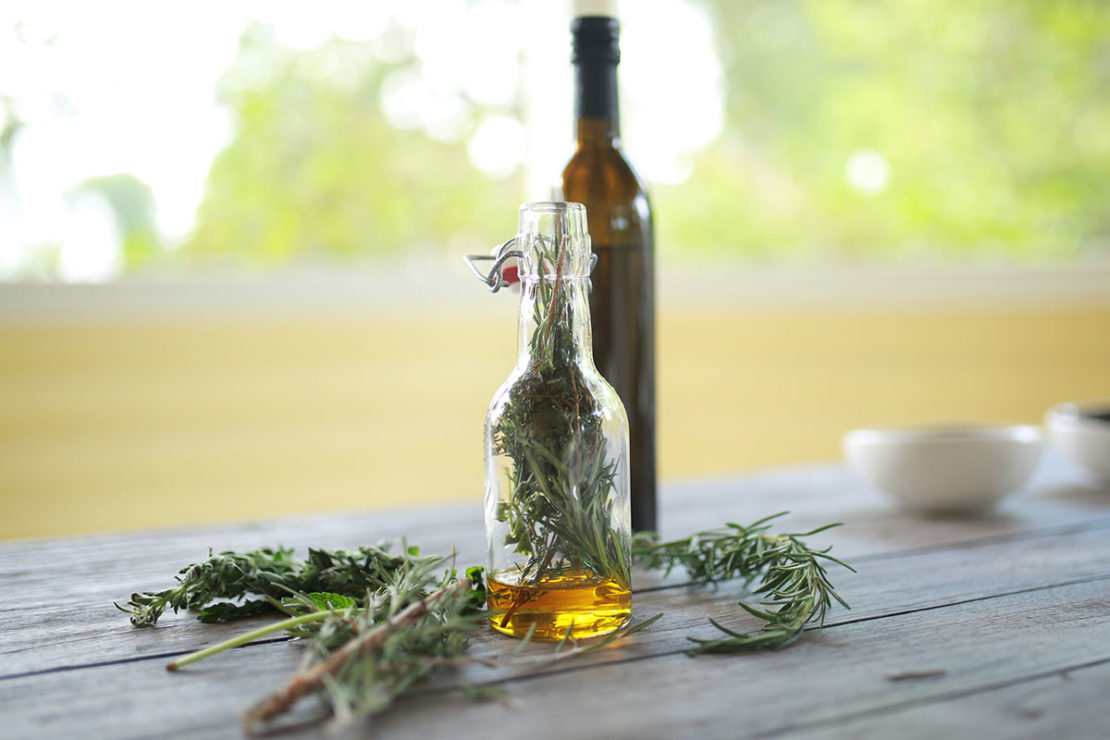
Ayurvedic Uses of Herbal Oils and Ghee
If you enjoy the taste of ghee and the feel of a luscious body oil, it’s for good reason! Not only are fats tasty and skin smoothing, these lipids have the power to tremendously benefit our well-being.
In this article, we will largely explore the uses of herbal ghees. You will also be exposed to other Ayurvedic uses of herbal oils, such as abhyanga oils (herbal massage oils) and nasya oils (oils used in nasal administration). The use of herbal oils in Ayurveda is vast. This is an exploration of some of the more common and convenient Ayurvedic uses of herbal oils.
The Importance of Lipids in Ayurveda
Oil holds a very special place in Ayurveda. To understand Ayurveda’s deep love affair with lipids, it is helpful to come back to the word for oil in Sanskrit, snehana. This word contains the root sneha, meaning love, affection, and also unctuousness. “Well nourished flesh feeds fat, whose function is ‘sneha,’ which literally means unctuousness. Fat, and to some extent flesh as well, provide us with that sublime satisfaction that a sound sleeper receives from a warm quilt on a cold night” (Svoboda, 1999, p. 77).
Our fat tissue, or medas, as it is referred to in Ayurveda, is linked on a subtle level to a sense of contentment. Possessing medas of good quantity and quality is one of the ways we maintain a sense of stability, contentment, and protection. Or as my dear yoga teacher, Kofi Busia has said, “Fat is wisdom.”
We not only receive nourishment and protection from the fat layers on our bodies; we get this same comforting nourishment from the fats that we consume and slather on our skin, particularly when those lipids are of high quality. The nourishing quality of oil is intensified when it is infused with herbs and spices.
Oils and fat are so valuable in Ayurveda because not only is oil an incredibly rich source of nutrition and energy, it also provides us with nourishment and protection on a subtle, emotional level. Good use of ghee and oil is key for building and maintaining ojas, our vital life-sap. Furthermore, herbal oils can be used for a multitude of purposes, both internally and externally. Here we will explore a few of the many ways in which herbal oils can be consumed and applied for profound health benefits.
Ayurvedic Uses of Herbal Ghee
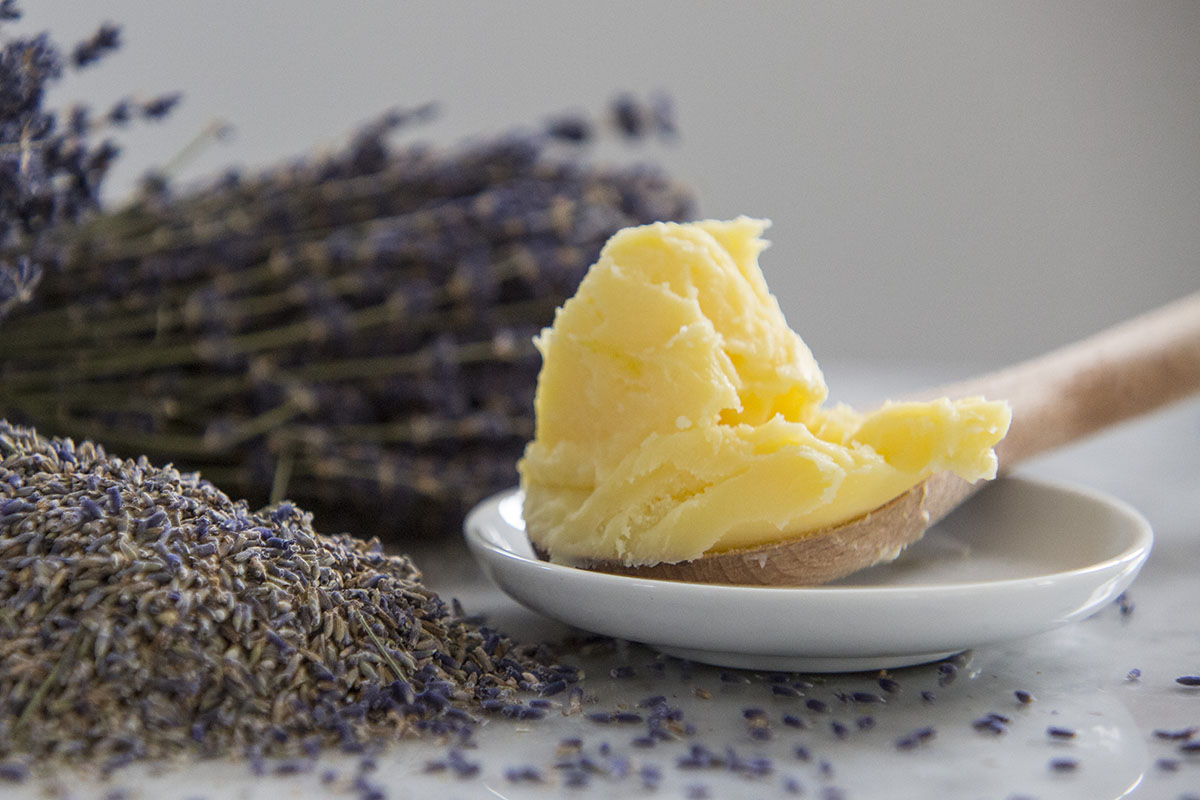
One cannot talk about Ayurvedic uses of herbal oils without discussing ghee. Ghee is a cornerstone of Ayurvedic cooking and Ayurvedic body therapies. Ghee is tridoshic, meaning it is appropriate for all three constitutional types (vata, pitta, and kapha). Of the three types, vata types benefit from the heaviest consumption and application of oils. Pittas should use a moderate amount of oils, and kapha types only need very small amounts. Ghee is highly revered in Ayurveda. It is essentially clarified butter and can either be purchased or made at home.
Ghee is considered to be sweet in taste, cool in nature, and to have a highly nourishing effect on all the bodily tissues. It is particularly nourishing to the brain (Dass, 2013). Furthermore, if you can tolerate it, full-fat dairy has numerous health benefits. “Grass-fed butter is rich in vitamin A, vitamin D, conjugated linolenic acid (CLA), omega-3 fatty acids, and vitamin K2 (an important nutrient for bone health that is found only in dairy products and a few other foods)” (Palanisamy, 2015, p. 48). In addition, some promising studies show that consumption of full-fat dairy products may also be associated with a lower risk of diabetes (Palanisamy, 2015).
“Otherwise known as clarified butter, often used in French cooking, ghee is considered to be the most beneficial cooking medium in Ayurveda and the jewel in the crown of Ayurvedic healing” (O’Donnell, 2015, p.114). On a personal note, I sometimes joke that my husband and I are on the “Ayurvedic French diet” in reference to the massive quantities of ghee that we consume on a regular basis!
If you haven’t tried it, ghee really is delightful stuff. Its high smoke point makes it suitable for high-temperature cooking, and it has a pleasant enough flavor that it works well in both sweet and savory dishes. However, ghee isn’t just for culinary purposes. It is also a remarkable medium for herbs, having the ability to carry the therapeutic effects of herbs and spices deep into the bodily tissues.
A Family-Owned Herbal Ghee Business
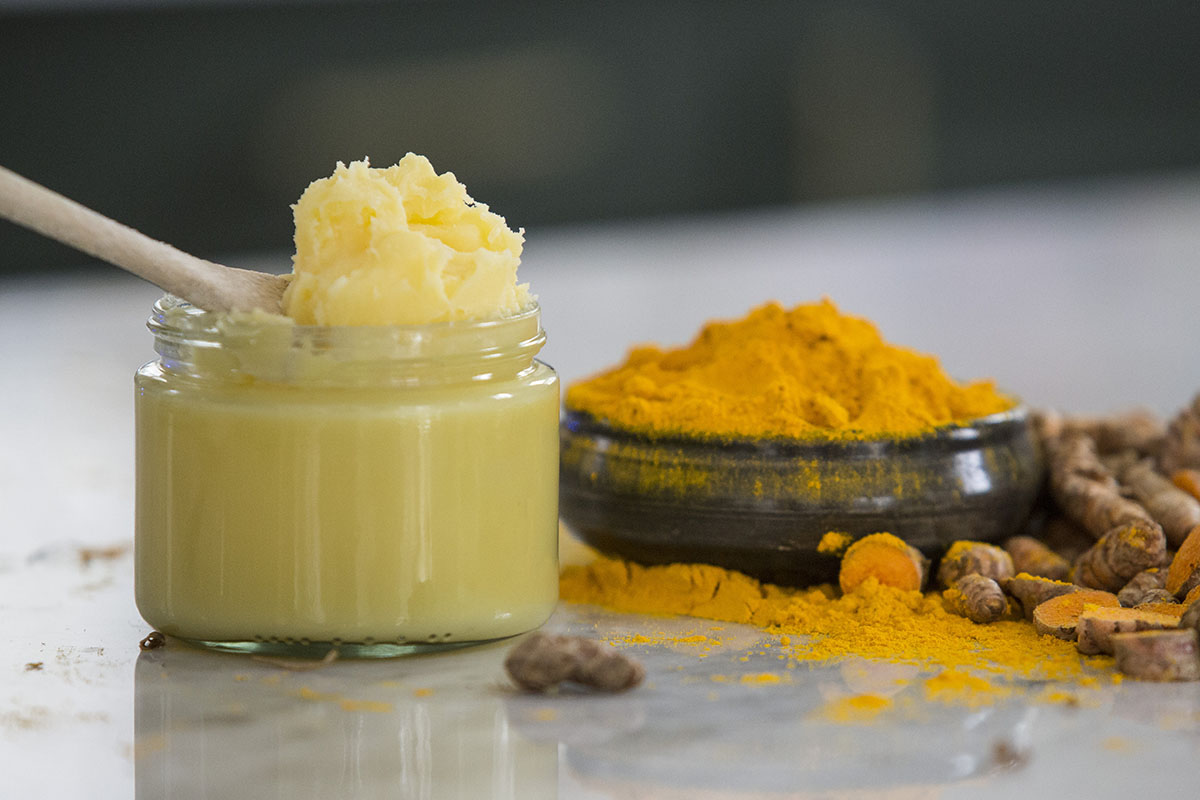
When I think of high-quality ghee, one of the first people who comes to mind is Sandeep Agarwal and his family-owned business, Pure Indian Foods. Pure Indian Foods is based in New Jersey. However, Sandeep’s ghee-making roots run deep. His family owns a one-hundred-year-old ghee shop in India, where his uncle has worked all his life. Sandeep became interested in the use of ghee because of some health issues in his family. He had always resisted his mother’s ample use of ghee, deploring the way she would slather the family’s flatbread in it. Like many Americans, Sandeep believed that a low-fat diet is better. However, after his son became sick, Sandeep’s research led him straight back to the ancient wisdom of traditional Indian cooking and his deep family roots of ghee making. The Agarwals cleaned up their diet, cut back on sugar, and reintroduced ghee!
Sandeep and his wife, Nalini, started making small batches of ghee using only local, organic milk. They eventually refined their ghee to only use grass-fed, local, organic milk. They have noticed a big difference in grass-fed versus grain-fed versions—the grass-fed ghee being much more aromatic.
Pure Indian Foods initially began making culinary ghee—ghee infused with cooking spices. Some of these include Hing Ghee, Turmeric Superghee, Herbes de Provence Ghee, Indian Dessert Ghee, and a Digestive Ghee that includes organic ginger, cardamom, and cinnamon. Spiced ghees are a fabulous and tasty way to get familiar with the use of herbal ghee.
I asked Sandeep why ghee is such a great medium for herbs and spices, and he summarized it with these three main points:
- Fats make herbs more bioavailable. Sandeep explained that the same is true for veggies. He gave the example that buttering your broccoli actually makes it more nutritious by making it easier for our bodies to absorb the nutrients. Ghee brings out the nutrients in the herbs and spices. It imbibes the qualities of the herbs and when consumed, carries those properties deep into our bodily tissues, increasing absorption. Sandeep elaborated that the synergy between ghee and herbs is clearly explained in the Charaka Samhita, a key classical Ayurvedic text. Furthermore, ghee assumes the properties of herbs without losing its own amazing attributes.
- Ghee is also an excellent preservative for herbs and spices. When infused in ghee, herbs maintain their nutrients for longer, and the fragile volatile oils are kept potent by way of the fat.
- Herbs become more concentrated when infused in ghee. Due to the slow and thorough preparation process of herbal ghees, and the way in which ghee assumes an herb’s fat soluble components, you actually get a richer dosage of herb by taking it in ghee form (S. Agarwal, personal communication, January 23, 2018).
Herbs to Incorporate into Herbal Ghee
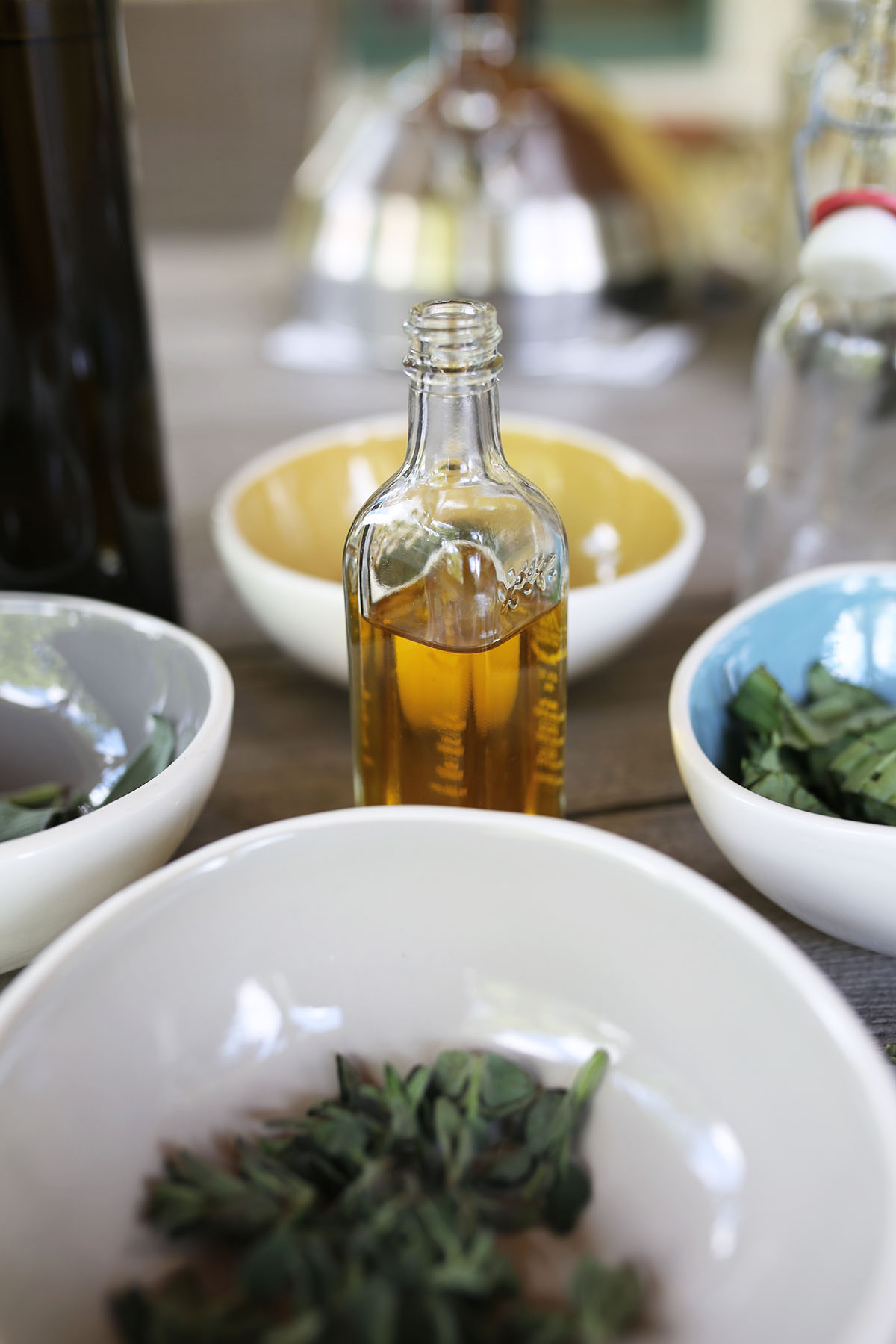
Culinary spiced ghees are positively delicious, convenient, and have broad uses in cooking. However, herbal ghees, such as brahmi (Bacopa monniera) and ashwagandha (Withania somnifera) ghee, are generally less tasty and recommended to be taken away from meals. The recommended usage may vary a bit from person to person, but a teaspoon of herbal ghee in a half cup of warm water once or twice per day is generally recommended.
Though you may not love the taste, the benefits of herbal ghees are profound, and the usages are vast. In addition to brahmi ghee and ashwagandha ghee, other examples include triphala ghee (formula described below) and shatavari ghee (Asparagus racemosus).
Ashwagandha has become an increasingly popular herb. In Ayurveda, it is considered to be a rasayana, or rejuvenating herb. Ashwagandha is currently applied in sports medicine for its capacity to expand strength and stamina. It is also an overall adaptogen, nervous system tonic, and muscle tonic. Taking ashwagandha in ghee form multiplies its nourishing, strengthening qualities.
Brahmi is also remarkably rejuvenating, but more so for the mind and nervous system. “Brahmi is another name for the Goddess Saraswati, and it refers to the feminine aspect of Brahman, the cosmic consciousness, that is associated with knowledge, learning, and the arts” (Dass, 2013, p. 165). Since ghee is also a brain tonic, taking Brahmi in ghee magnifies its capacity as a brain and nervous system rejuvenator.
Triphala ghee is prepared with the classic Ayurvedic triad, triphala. Triphala is an equal blend of three fruits: amalaki (Emblica officinalis), bibhitaki (Terminalia bellerica), and haritaki (Terminalia chebula). This gentle yet powerful trifecta is indicated in larger doses for constipation, in small doses for diarrhea, and as an all-around cleansing and rejuvenating tonic (Dass, 2013). Triphala ghee is a particularly appropriate option for vata types who suffer from hard stools or constipation, as the ghee adds a moistening quality, which may help regulate bowel movements along with the triphala.
Shatavari is a renowned reproductive tonic, particularly for women. Its cool, sweet, and heavy qualities make it especially soothing for pitta dosha and pitta imbalances, particularly those related to menopause and the menstrual cycle (Dass, 2013). Since ghee is also cool, moist, and nourishing, taking shatavari in ghee form enhances its cool, moist, and nourishing effects.
Adding Herbal Ghee in Hot Beverages
Another creative way to imbibe ghee is in your tea or coffee. Pure Indian Foods began making their “coffee ghee” several years ago when Sandeep and Nalini Agarwal learned that people were putting MCT oil (medium-chain triglycerides, derived from coconut) in their coffee in order to extend and balance the energizing effects of coffee. Pure Indian Foods’ “coffee ghee” is a combination of ghee and MCT oil. Sandeep notes that this practice of adding butter or oil to tea and coffee originally comes from the people of Nepal and Tibet, who make butter tea.
I would not necessarily recommend taking medicinal herbal ghees such as brahmi ghee with your tea or coffee. This is because the taste of these medicinal ghees can be quite bitter and in many ways the herbs and the coffee may be working against one another, having opposing effects. However, you could certainly add a culinary spiced ghee to a hot beverage. In fact, I bet a spoonful of digestive spiced ghee would be a great addition to a cup of hot chai!
Using Herbal Ghee During “Nasya”
It is also worth noting that while it is common to take herbal ghee orally, there are many usages for herbal ghee. For instance, Brahmi ghee can be warmed and administered nasally. Nasya is a cleansing Ayurvedic practice in which oils, often infused with herbs, are administered nasally while the client is lying down. Taking herbs in this way is an effective method for directly reaching the brain and nervous system, and should be performed by a trained practitioner. As David Frawley explains, “[Nasya] allows for direct action on prana and the brain.” (Frawley, 200, p. 133). Herbal nasya oils, such as those containing brahmi, calamus (Acorus calamus), skullcap (Scutellaria lateriflora), and other nervines, are commonly recommended for cases of anxiety, insomnia, brain fog, and other nervous system woes.
Other Specialized Uses for Herbal Ghee
There are also special Ayurvedic treatments in which ghee is taken in fairly large doses orally as a part of a deep detoxification process known as pancha karma. There is also the labor-intensive 100 times washed ghee, which is a remarkably fluffy ghee that is used externally on the skin. Ghee can also be administered internally using various therapeutic methodologies, but I recommend working closely with an experienced practitioner in such cases. One example is applying shatavari ghee vaginally by way of a soaked tampon.
Making Herbal Ghee At Home
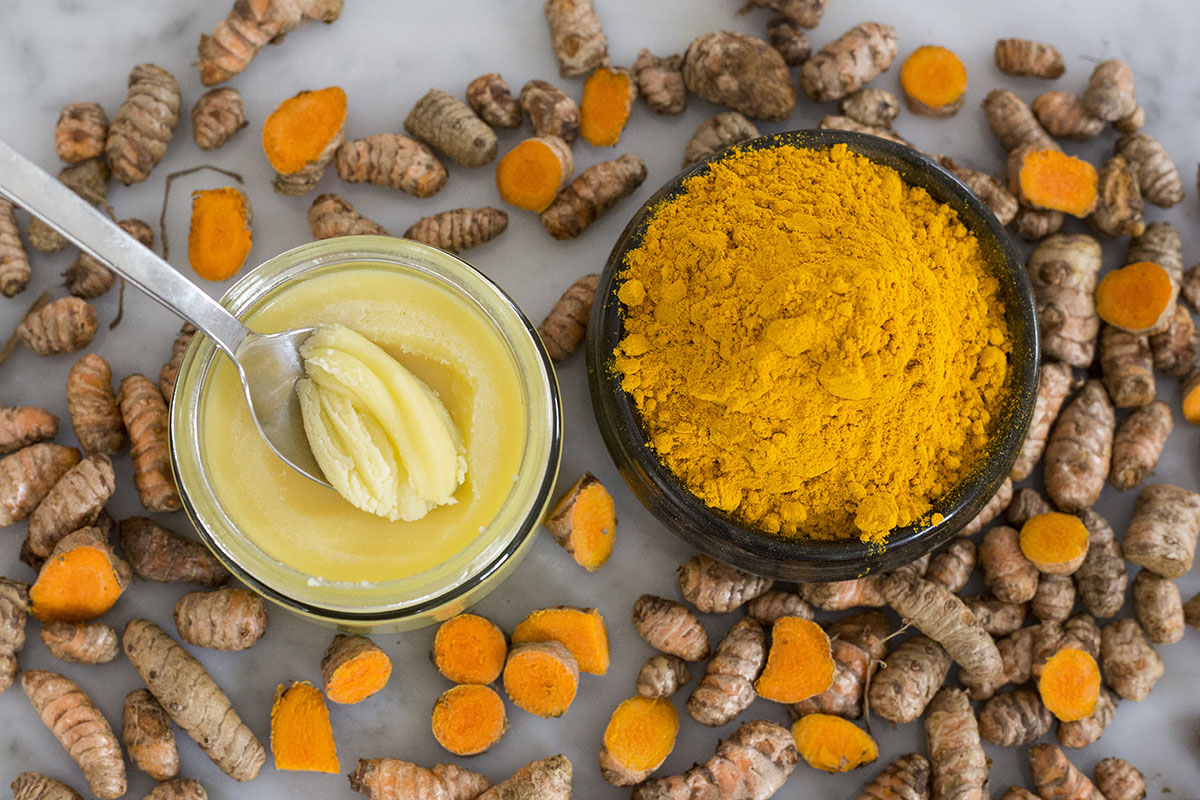
At this point, you may be wondering if you can make herbal ghee at home. The answer is yes! However, making herbal ghee is quite time intensive and does require a good deal of exactitude and vigilance. When speaking with Sandeep about his company’s process, he explained that the Pure Indian Foods team takes two to three days to make a small batch of ghee, allowing the herbs to macerate in ghee for maximum potency. For those accustomed to herbal formulating, this may be a reasonable undertaking. On the other hand, sometimes simply purchasing a pre-made herbal ghee is the way to go, so that you can enjoy the benefits without the headache of babysitting a pot of slow simmering ghee.
Nonetheless, for the adventuresome and diligent spirit, here is a basic outline for making herbal ghee. As far as ghee making goes, this is the quick and dirty method. As Sandeep noted, it is ideal to let the herbs macerate in ghee for a couple of days. This basic recipe is from the 2016 Making Herbal Medicines Workshop hosted by the California College of Ayurveda. It will make a single four ounce jar of herbal ghee using the soft or powdered parts of herbs.
1-ounce herb (by weight) Though herbal ghee is positively divine, Ayurvedic uses of herbal oils does not end there! As I alluded to earlier, one great way to use herbal oil is to apply it to the skin. There are a number of practices in Ayurveda that are known as dinacharya, or daily routines. One of these is abhyanga. Abhyanga is a type of massage in which two practitioners apply generous amounts of oil to the recipient’s skin while massaging with long strokes. However, abhyanga can also be performed on oneself in a truncated form daily.
This does not have to be as time-consuming as it sounds. The traditional approach to self-abhyanga is to warm a bottle of oil (usually sesame oil), massage into the skin from head to toe, let soak for twenty or so minutes, and then lightly shower off. While this is a lovely practice, for those who feel short on time, a simple coat of warm oil before, after, or during the daily bath does wonders for nourishing the skin and provides a subtle sense of protection.
The soothing benefits of abhyanga can be enhanced even further by use of herbal infused oils. One classic is ashwagandha-bala oil. Ashwagandha and bala (Sida cordifolia) are both considered to be rasayanas in Ayurveda. They tonify the muscle tissues as well as the nerves and subtle mind. For vata types or anyone who needs a little bolstering, ashwagandha-bala oil is perfect for warming and strengthening both the subtle and physical body.
Another great reason to use herbal infused body oils is that we have the ability to absorb the properties of herbs through our skin. Just like herbal ghee, there are numerous herbal body oils available. More cooling pitta-friendly oils may include herbs such as gotu kola (Centella asiatica), manjishta (Rubia cordifolia-radix), coriander (Coriandrum sativum), and shatavari. A good body oil for kapha may include warming herbs such as chitrak (Plumbago zeylanica), calamus, rosemary (Rosmarinus officinalis), and mustard (Brassica nigra). For vata, an oil that is both sweet and warming is good. Some likely ingredients are ashwagandha, bala, valerian (Valeriana officinalis), and licorice (Glycyrrhiza glabra).
By now you may be catching on to the fact that Ayurvedic uses of herbal oils is quite extensive. This article gives you a mere introduction to some of the more common usages. Some of these applications are best practiced under the supervision of a practitioner. If you need help knowing where to begin, a daily abhyanga and experimenting with a yummy spiced ghee or rejuvenating herbal ghee are a couple of great ways to get started! REFERENCES
Dass, V. (2013). Ayurvedic herbology. Twin Lakes, WI: Lotus Press.
Frawley, D. (2000). Ayurvedic healing. Twin Lakes, WI: Lotus Press.
California College of Ayurveda. (2016). Making Herbal Medicines Workshop. [Workshop]. Nevada City, CA.
O’Donnell, K. (2015). The everyday Ayurveda cookbook. Boulder, CO: Shambala Publications, Inc.
Palanisamy, A. (2015). The paleovedic diet. New York, NY: Skyhorse Publishing.
Svoboda, R. (1999). Prakriti: Your Ayurvedic constitution. Delhi: Motilal Banarsidass Publishers.
Basic Herbal Ghee
4 ounces ghee
16 ounces water
Other Ayurvedic Uses of Herbal Oils
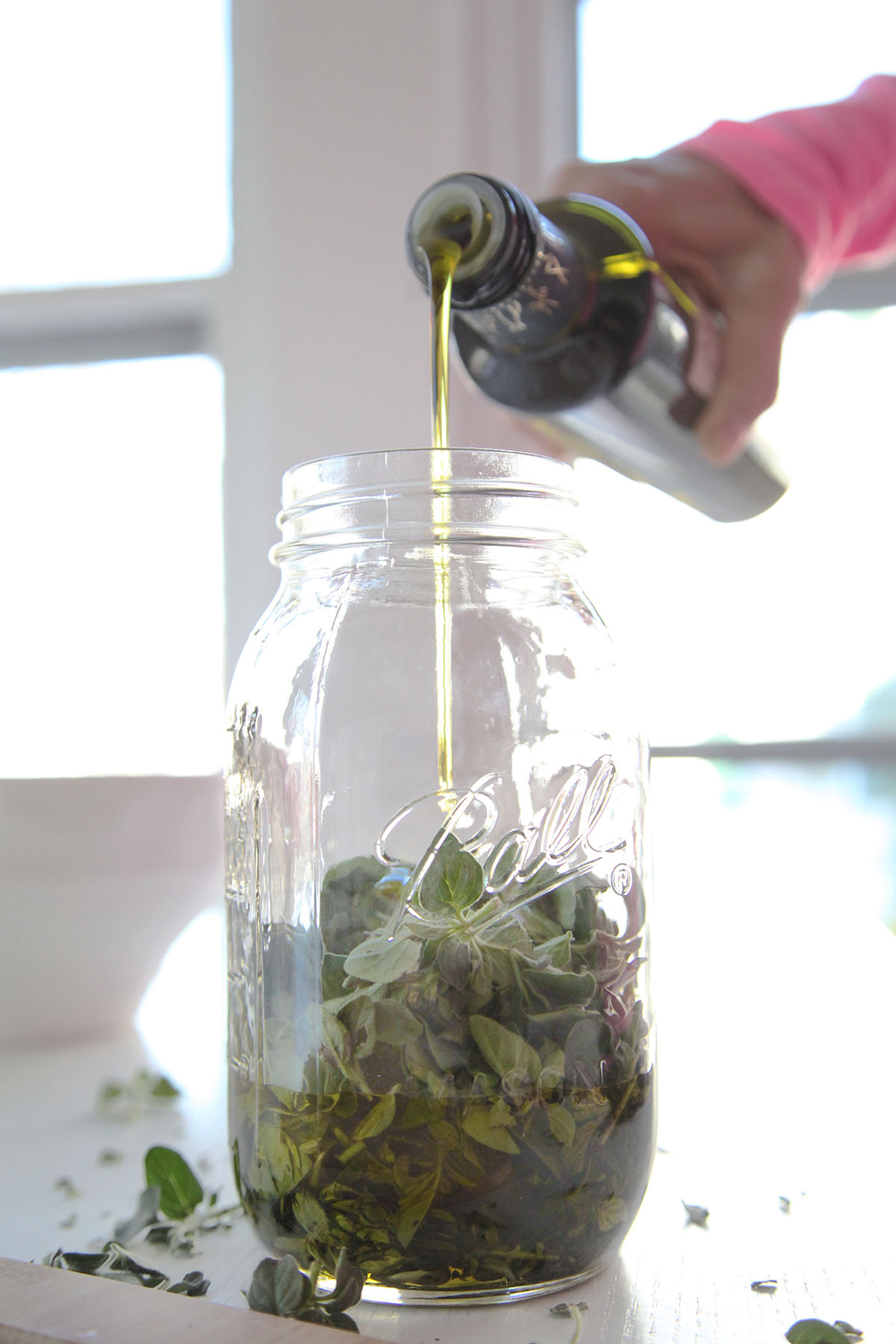
Ayurvedic Uses of Herbal Oils for your Dosha
